Related Research Articles

Botswana is a landlocked country located in Southern Africa, north of South Africa. Botswana occupies an area of 581,730 square kilometres (224,610 sq mi), of which 566,730 km2 (218,820 sq mi) are land. Botswana has land boundaries of combined length 4,347.15 kilometres (2,701.19 mi), of which the constituent boundaries are shared with Namibia, for 1,544 km (959 mi); South Africa 1,969 km (1,223 mi); Zimbabwe, 834 km (518 mi) and Zambia, 0.15 km (0.093 mi). Much of the population of Botswana is concentrated in the eastern part of the country.

A swamp is a forested wetland. Swamps are considered to be transition zones because both land and water play a role in creating this environment. Swamps vary in size and are located all around the world. The water of a swamp may be fresh water, brackish water, or seawater. Freshwater swamps form along large rivers or lakes where they are critically dependent upon rainwater and seasonal flooding to maintain natural water level fluctuations. Saltwater swamps are found along tropical and subtropical coastlines. Some swamps have hammocks, or dry-land protrusions, covered by aquatic vegetation, or vegetation that tolerates periodic inundation or soil saturation. The two main types of swamp are "true" or swamp forests and "transitional" or shrub swamps. In the boreal regions of Canada, the word swamp is colloquially used for what is more formally termed a bog, fen, or muskeg. Some of the world's largest swamps are found along major rivers such as the Amazon, the Mississippi, and the Congo.

Wood Buffalo National Park is the largest national park of Canada at 44,741 km2 (17,275 sq mi). It is in northeastern Alberta and the southern Northwest Territories. Larger in area than Switzerland, it is the second-largest national park in the world. The park was established in 1922 to protect the world's largest herd of free-roaming wood bison. They became hybridized after the introduction of plains bison. The population is currently estimated at about 3,000. It is one of two known nesting sites of whooping cranes.

Sylvia Alice Earle is an American marine biologist, oceanographer, explorer, author, and lecturer. She has been a National Geographic Explorer at Large since 1998. Earle was the first female chief scientist of the U.S. National Oceanic and Atmospheric Administration, and was named by Time Magazine as its first Hero for the Planet in 1998.

The Okavango River, is a river in southwest Africa. It is known by this name in Botswana, and as Cubango in Angola, and Kavango in Namibia. It is the fourth-longest river system in southern Africa, running southeastward for 1,600 km (1,000 mi). It begins at an elevation of 1,300 metres (4,300 ft) in the sandy highlands of Angola. Farther south, it forms part of the border between Angola and Namibia, and then flows into Botswana. The Okavango does not have an outlet to the sea. Instead, it discharges into the Okavango Delta or Okavango Alluvial Fan, in an endorheic basin in the Kalahari Desert. The Cuito River is a major tributary.

The Okavango Delta in Botswana is a vast inland delta formed where the Okavango River reaches a tectonic trough at an altitude of 930–1,000 m in the central part of the endorheic basin of the Kalahari.
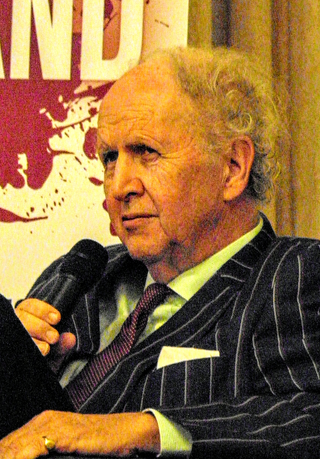
Sir Alexander "Sandy" McCall Smith is a Scottish legal scholar and author of fiction. He was raised in Southern Rhodesia and was formerly Professor of Medical Law at the University of Edinburgh. He became an expert on medical law and bioethics and served on related British and international committees. He has since become known as a fiction writer, with sales in English exceeding 40 million by 2010 and translations into 46 languages. He is known as the creator of The No. 1 Ladies' Detective Agency series. The "McCall" derives from his great-great-grandmother Bethea McCall, who married James Smith at Glencairn, Dumfries-shire, in 1833.
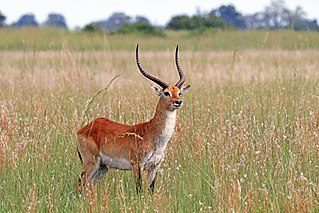
The lechwe, red lechwe, or southern lechwe is an antelope found in wetlands of south-central Africa.

The North-West District or Ngamiland is one of the first-level administrative subdivisions of Botswana. For census and administrative purposes Ngamiland is subdivided into Ngamiland East, Ngamiland West and Ngamiland Delta (Okavango). It is governed by a District Commissioner, appointed by the national government, and the elected North-West District Council. The administrative centre is Maun.
Alastair Humphreys is an English adventurer, author and motivational speaker. Over a four-year period he bicycled 46,000 miles (74,000 km) around the world. He was a National Geographic Adventurer of the Year in 2012. He is responsible for the rise of the idea of the microadventure – short, local, accessible adventures.
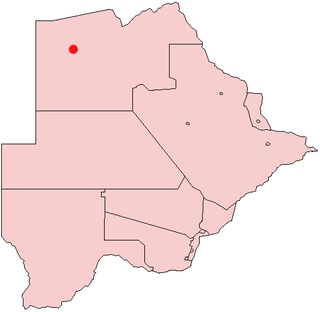
Gumare or Gomare is a rural village located in the North-West District of Botswana, near the Okavango Delta. The population of Gumare was 6,067 in 2001 census, but had risen to 8,532 iby the 2011 census.

The Kalahari Basin, also known as the Kalahari Depression, Okavango Basin or the Makgadikgadi Basin, is an endorheic basin and large lowland area covering approximately 725,293 km2 - mostly within Botswana and Namibia, but also parts of Angola, South Africa, Zambia, and Zimbabwe. The outstanding physical feature in the basin, and occupying the centre, is the large Kalahari Desert.

Conrad Anker is an American rock climber, mountaineer, and author. He was the team leader of The North Face climbing team for 26 years until 2018. In 1999, he located George Mallory's body on Everest as a member of a search team looking for the remains of the British climber. Anker had a heart attack in 2016 during an attempted ascent of Lunag Ri with David Lama. He was flown via helicopter to Kathmandu where he underwent emergent coronary angioplasty with a stent placed in his proximal left anterior descending artery. Afterwards he retired from high altitude mountaineering, but otherwise he continues his work. He lives in Bozeman, Montana.

Moremi Game Reserve is a protected area in Botswana. It lies on the eastern side of the Okavango Delta and was named after Chief Moremi of the BaTawana tribe. Moremi was designated as a game reserve, rather than a national park, when it was created. This designation meant that the BaSarwa or Bushmen that lived there were allowed to stay in the reserve.

Stephen James Backshall is a British naturalist, explorer, presenter and writer, best known for BBC TV's Deadly 60.
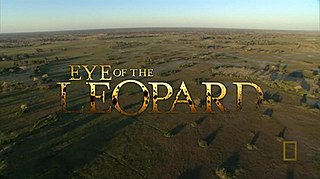
Eye of the Leopard is a 2006 National Geographic documentary directed by Dereck and Beverly Joubert. Set in the Mombo region of the Okavango Delta, Botswana, the film explores the life of a female leopard, Legadema, as she matures from a cub to an adult. Jeremy Irons, voice actor of Scar from Disney's 1994 animation The Lion King, narrates the film. It premiered in the US on the National Geographic Channel on October 8, 2006, and has won many awards including the BBC wildscreen Panda award for Best Sound Wild Screen and an Emmy. Since the success of the film, a book and an app of the same title have been released.

The wildlife of Botswana refers to the flora and fauna of this country. Botswana is around 90% covered in savanna, varying from shrub savanna in the southwest in the dry areas to tree savanna consisting of trees and grass in the wetter areas. Even under the hot conditions of the Kalahari Desert, many species survive; in fact the country has more than 2500 species of plants and 650 species of trees. Vegetation and its wild fruits are also extremely important to rural populations living in the desert and are the principal source of food, fuel and medicine for many inhabitants.

Botswana–Namibia relations refers to the current and historical relationship between Botswana and Namibia. As of 2009, relations were considered friendly, with the two neighboring countries cooperating on economic development. Botswana gained independence from Britain in September 1966. Namibia gained independence from South Africa in 1990 following the Namibian War of Independence, and the two countries soon after established formal diplomatic relations. Botswana has a high commission in Windhoek. Namibia has a high commission in Gaborone.
Nature's Microworlds is a 2012 British nature documentary series. Produced by the BBC, the series is narrated by Steve Backshall and produced by Doug Mackay-Hope. There are thirteen thirty-minute episodes in the series, which was first broadcast on BBC Four. Each episode focuses on its eponymous region, exploring the wildlife of the microclimate found there: The featured ecosystems include the archipelago of volcanic islands known as the Galapagos, the grasslands of the Serengeti in Africa, the Amazon rainforest covering most of South America, the kelp forest located in California's Monterey Bay, the Okavango Delta where the Okavango River empties into a wetland surrounded by the Kalahari Desert, and the Arctic wilderness of the Svalbard archipelago.
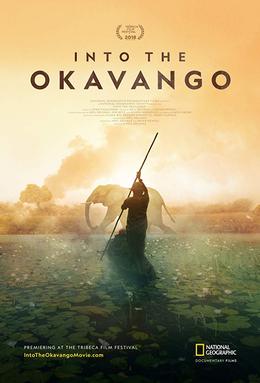
Into the Okavango is a 2018 American National Geographic documentary film written, directed and produced by Neil Gelinas. The story of the film is about a team of modern day explorers who go for 1500 mile long expedition for a period of four months on a trip to three African nations namely Angola, Botswana and Namibia to save the Okavango River that joins the Okavango Delta. The film was predominantly shot in Angola and Botswana. It was released on 22 April 2018 and gained critical acclaim for the portrayal of wildlife. The documentary film was also screened in a handful of international film festivals and also won several awards and nominations.
References
- ↑ "Expedition Launched to Save Africa's Largest Wetland". National Geographic News. 27 May 2016. Archived from the original on 30 May 2015. Retrieved 15 November 2016.
- ↑ Boyes, Steve (11 August 2012). "Bush Boyes on Expedition: Madinari "Mother of the Buffalo" Island to the Mombo Wilderness…". National Geographic Society (blogs). Archived from the original on 12 August 2012. Retrieved 15 November 2016.